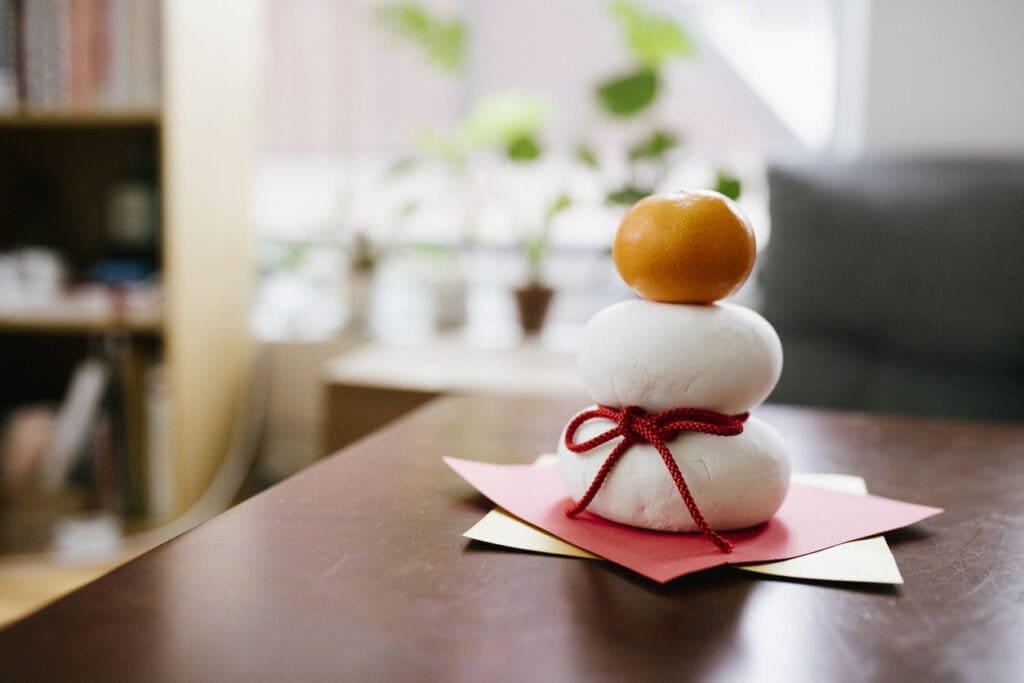While Japan is known for being the world’s overwork capital, the New Year’s holidays in Japan provide an opportunity for everyone to unwind.
Because New Year’s Eve is mainly a tranquil time spent with family (as opposed to the wild celebrations of the West), much of the country shuts down to rest. This implies that nothing will be open for many days, including stores, restaurants, and even doctors’ offices.
You’ll discover that Japan is bursting at the seams with amazing, Instagram-worthy traditional decorations, wonderful cuisine, and unique cultural rituals around the holidays.
Read on to discover more about Japanese new year traditions, so you can make the most of them.
Contents of this publication:
1. Syntonize the Kohaku Uta Gassen

Most individuals spend New Year’s Eve meeting with their families and watching a lot of television. Kohaku Uta Gassen, or simply Kohaku, is an NHK Christmas program that airs every year around the holidays. The Japanese term “Kohaku” (紅白) is made up of the characters meaning red and white. During the program, the year’s most popular musical performers are divided into two teams: men (the white team) and women (the red team), and compete in a singing competition.
The judges and audience vote to choose the winning team at the end of the show. While it may appear like performing on Kohaku is merely for fun, it is a big honor. Many Japanese singers consider it to be the pinnacle of their careers. For the rest of us, it’s a terrific chance to relax and unwind before the new year begins.
2. Keep an eye on the Ekiden for the New Year

The New Year Ekiden is a yearly college relay event from Tokyo to Hakone that attracts spectators from all around Japan. It’s the most-watched marathon on Japanese television, and the large audience is seen as a major incentive for elite runners.
The two-day, round-trip 218-kilometer race is another mainstay of New Year’s TV broadcasts, and it always generates a lot of interest and talks throughout the holidays. The race is divided into ten sections, each of which is around half a marathon long. What better method to keep yourself motivated to be in shape for the next year?
3. Overindulge in “Osechi”

“Osechi ryori” is a collection of meals that fall under the umbrella phrase “traditional Japanese New Year delicacies” and are packaged in square, lacquerware boxes. Some households prepare their own “osechi”, while others pay high prices for them. In any case, the idea is to avoid having to cook on New Year’s Day.
A mochi rice soup called “zoni”, red and white veggies called “kohaku-namasu” (there’s that red-white motif again! ), and daily side dishes like konbu (seaweed) and “kuro-mame” are among the highlights of “osechi”(black soybeans). Yum!
4. Give it a try to “Oshiruko”

Oshiruko is a sweet azuki bean porridge that is cooked, mashed, and served with mochi in a bowl (sticky pounded rice). It’s also a delicious red bean beverage available in vending machines in Japan. It’s sometimes served with chestnuts or dumplings. Sweet azuki beans aren’t for everyone, so try pairing them with something tart, like umeboshi, like the natives do (pickled plum).
5. Indulge in a bowl of lengthy soba noodles

Eat some long noodles since it’s been a long year…
“Toshikoshi Soba”, or year-crossing noodle, is a traditional bowl of plain noodles served on New Year’s Eve by friends and family. The concept stems from the Japanese term “toshi-koshi”, which means “crossing over from one year to the next.”
During osechi, practically every family will have a bowl of toshi-koshi soba, and friends would usually go out to celebrate and share a few bowls just one hour before the new year.
6. Visit a shrine and pray

Visiting a shrine is one of the most well-known rituals to commemorate the New Year in Japan. People will pray for health, fortune, heavenly protection, or perhaps just good luck during the visit, according to a ritual known as “hatsumode“.
Tokyo’s Meiji Jingu and Kyoto’s Fushimi Inari Shrine are the two most visited shrines in Japan. If you don’t like crowds, though, consider visiting smaller shrines outside of large towns. The lineups may be quite long, and some individuals will stand in line for hours.
7. Locate your good fortune

Allowing bad luck to follow you around is a poor idea.
You may buy an omikuji (fortune slip) for 100 yen after your prayers at the shrine. The little pieces of paper are chosen at random and predict your fortunes for the coming year. There are various levels of luck, but this is one of them:
- Daikichi (大吉): Excellent luck, Great blessing.
- Kichi (吉): Good luck, blessing.
- Daikyo (大凶): Terrible luck, certain disaster, great curse.
They may also give you a year-ahead prediction for anything from love to employment. Even if you don’t have the finest omikuji luck, all is not lost! To reverse the ill-luck, bind the bad omikuji to a wooden post in the shrine. You may also buy omamori, or good luck charms, to assist you to overcome whatever bad luck the fates have in store for you.
8. Make sense of your dreams

Another approach to foretell your luck in the future year in Japan is to have your first dream of the new year. The dream you have when you fall asleep on January 1 and wake up on January 2 is known as “hatsuyume“, or first dream, and in order to accurately interpret it, you must be aware of the hatsuyume’s primary symbols.
Mount Fuji, a hawk, and an eggplant are the most auspicious emblems. While no one knows for sure why these three symbols are the finest, one popular belief is that it’s because Mount Fuji is the highest peak in Japan, hawks are intelligent and powerful, and the Japanese word for eggplant, nasu, is the same term for “doing something great.”
9. Give it a try to “kagami mochi

Kagami Mochi, a traditional Japanese New Year’s good luck charm
Supermarkets begin selling kagami mochi in front of the shopping aisles in early December. Two plump mochi cakes are layered on top of one other and embellished with beautiful paper and ferns to create this eye-catching dessert. While bitter orange is used in traditional kagami mochi, modern versions are topped with Japanese mikan.
Kagami mochi has a long history, but the two mochi cakes are said to represent a variety of things, like the passing of time, yin and yang, or the sun and moon. Kagami mochi is placed around the home to keep flames at bay and to bring good luck. They can be placed anywhere, although they’re usually kept on the family altar.
It’s also said that the mochi has kami (god) power, thus eating it is excellent for you! It can also be combined with oshiruku.
10. Pick up a fortunate bag if you’re feeling lucky

In keeping with the fortunate theme, this is also the time of year when many retailers are trying to get rid of excess inventory.
During the Christmas season, you may purchase a fukubukuro, or lucky bag, from practically every business or café. They’re sometimes referred to as “happy bags” since they have kanji printed on them, this is a very popular Japanese tradition. It’s jam-packed with enigmatic treats on the inside. As enigmatic as unsold devices are, clothing and other trinkets may be bought at roughly 50% off. If you’re very lucky, you’ll find something that is genuinely a good deal.
You may, on the other side, squander money on something absolutely useless. This is known as fukobukuro (misfortune bags) or utsubukuro (unlucky bags) (depressing bags). It’s probably better if you know what you’re getting. They aren’t all horrible, though. Particularly if you enjoy doughnuts, coffee, or tacoyaki.
These are just a few examples of how Japanese people celebrate the holidays. We hope it inspires you, and we wish you a wonderful start to the new year!

0 Comments